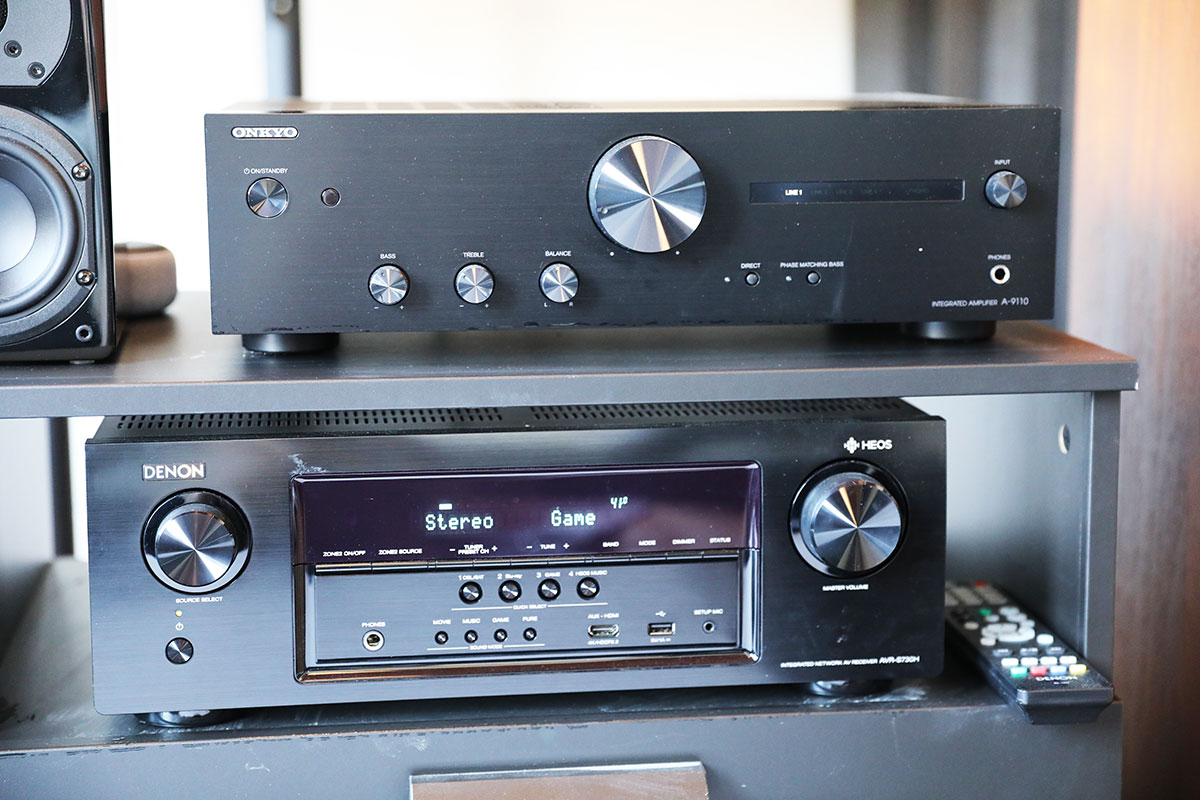
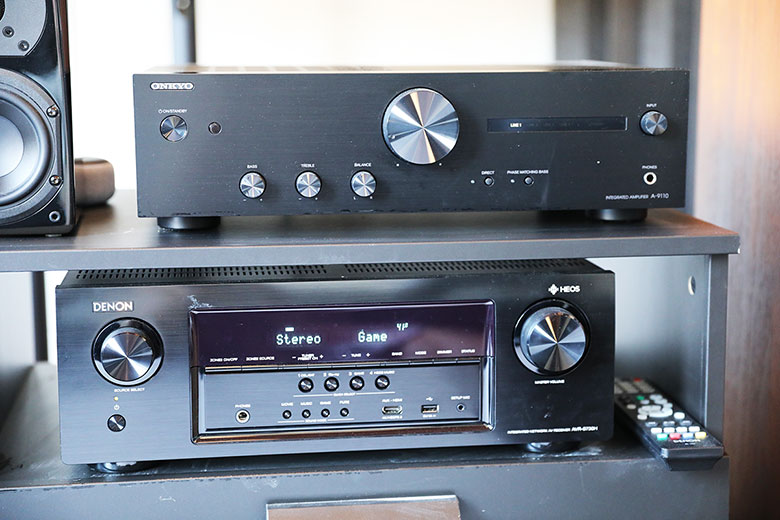
The Master Switch


The Master Switch
One of the most common questions we get here at The Master Switch is whether someone should buy an AV receiver or an amplifier for their setup. At first, we were surprised at the sheer volume of emails regarding what we thought was a fairly basic question. As it turns out, it’s not so basic. The audio industry hasn’t done a very good job of making the answer clear, because why would you offer clarity when you could use jargon instead? So, we’ve decided to put together a brief guide to demonstrate when to use a stereo amplifier, and when to use an AV receiver. There’s plenty of extra information about how to get the best out of these, too!
Let’s start with the simple part. An amplifier is a component of your sound system that not only powers your speakers, but lets you select the sound source and control the volume. In its simplest form, a stereo amp handles two channels, the left and the right, both of which make up the audio you hear. You can’t power speakers, or headphones, without some kind of amplifier - including wireless headphones which have their own internal amp.
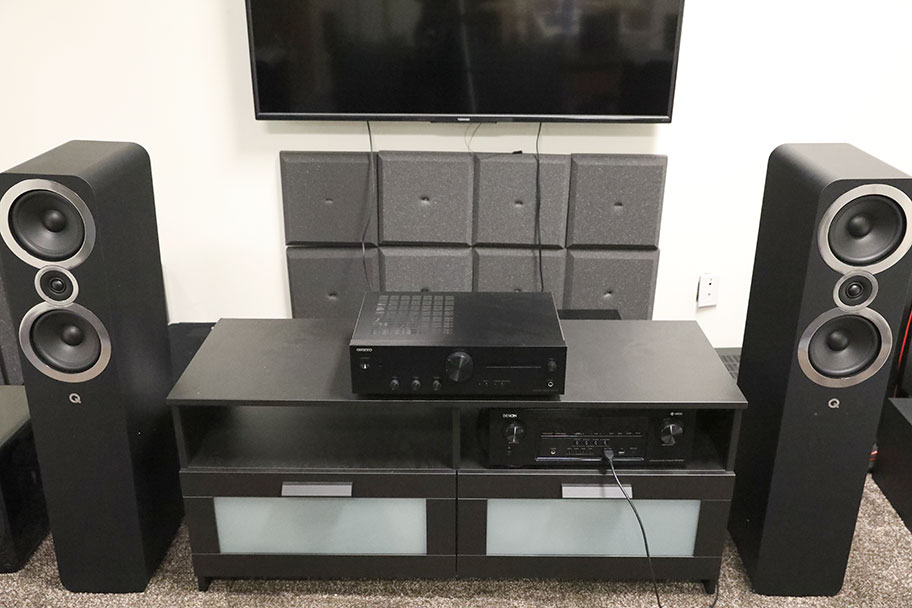
One important note to remember is that amps are designed to power passive speakers - as in speakers which receive their power from the amp itself, and are not connected to any direct power supply. You wouldn’t need to connect an amp to active speakers. These are also known as powered speakers, because each of them should already have an internal amp connected and matched to the driver (internal speaker). However, every rule has an exception, and if you’re looking to expand an existing system, you could actually hook up an additional amp and speakers. We’ll explain all this below.
.jpg)
An AV (Audio/Video) receiver is an amplifier on steroids. Instead of the usual two channels found on a regular amplifier, a receiver has the ability to output audio into five, seven, 11, or even 13 different channels. It also has the ability to handle video data, usually through an HDMI connection. While it doesn’t differ from regular amplifiers too much in terms of appearance – for the most part, we’re talking big black boxes here – the difference comes from the amount of power it offers, the number of channels, and the sheer range of features. AV receivers are far more likely to offer features like room correction, Bluetooth, wireless functionality, and more.
With all this, you’d expect AV receivers to be more expensive than regular amplifiers, right? Wrong. You can have stupendously expensive stereo amps and very cheap receivers, like the Pioneer VSX-534, which currently sells for around $370. The price you pay is not about the number of output channels, which are very simple for manufacturers to add, but for the overall audio quality, the quality of internal components, and more.
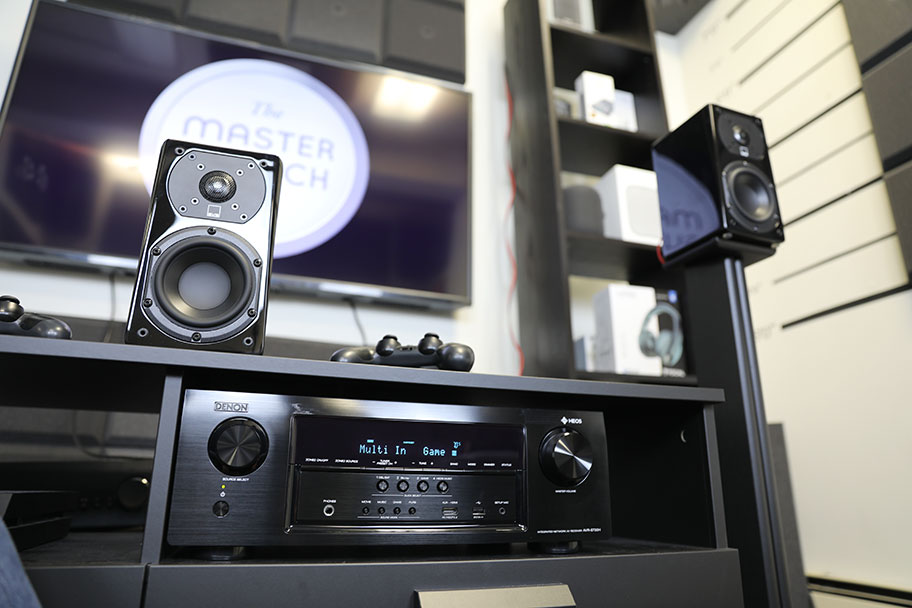
By now, you’ve probably already guessed the situations in which using either of these types of amps would be appropriate. If you only want to create a hi-fi setup, with two speakers and perhaps a subwoofer, then you would go for a stereo amp. This is because you don’t actually need more than two channels. If, however, you want to create a home entertainment setup, which will allow you to watch movies or series with surround sound, then it would be more appropriate to go for an AV receiver. You will need more speakers for this setup, and so will require more channels to power them. In this case, a stereo amp would be inappropriate.
Yes, there are certain exceptions to this rule as well, where you can incorporate additional amps into a setup with an already installed receiver. But generally speaking, you use a stereo amp for hi-fi, and an AV receiver for home theater. It really is that simple.
Before we go any further, we’d like to offer a word of warning. For most people, the information contained in this section may be too much. That isn’t because it’s overly complex – it’s actually pretty straightforward – but because going down the path of preamps and power amps can be a pretty expensive process. In most cases, it simply isn’t worth it. However, if you do want to find out more about how amplifiers work, then read on. This is about to get good.
From what we know so far, it’s pretty clear that both stereo amps and AV receivers are types of amplifiers, with a few key differences in their features and how many channels they output to. If that’s the case, then they must share some commonalities in their internal circuitry. This is where you come across the concept of preamps and power amps. Together, a preamp and power amp take the raw signal from your sound source, which is at a level too low for you to hear, and amplify it, making it loud enough to listen to. They will also imbue it with some good qualities, like richness and depth.
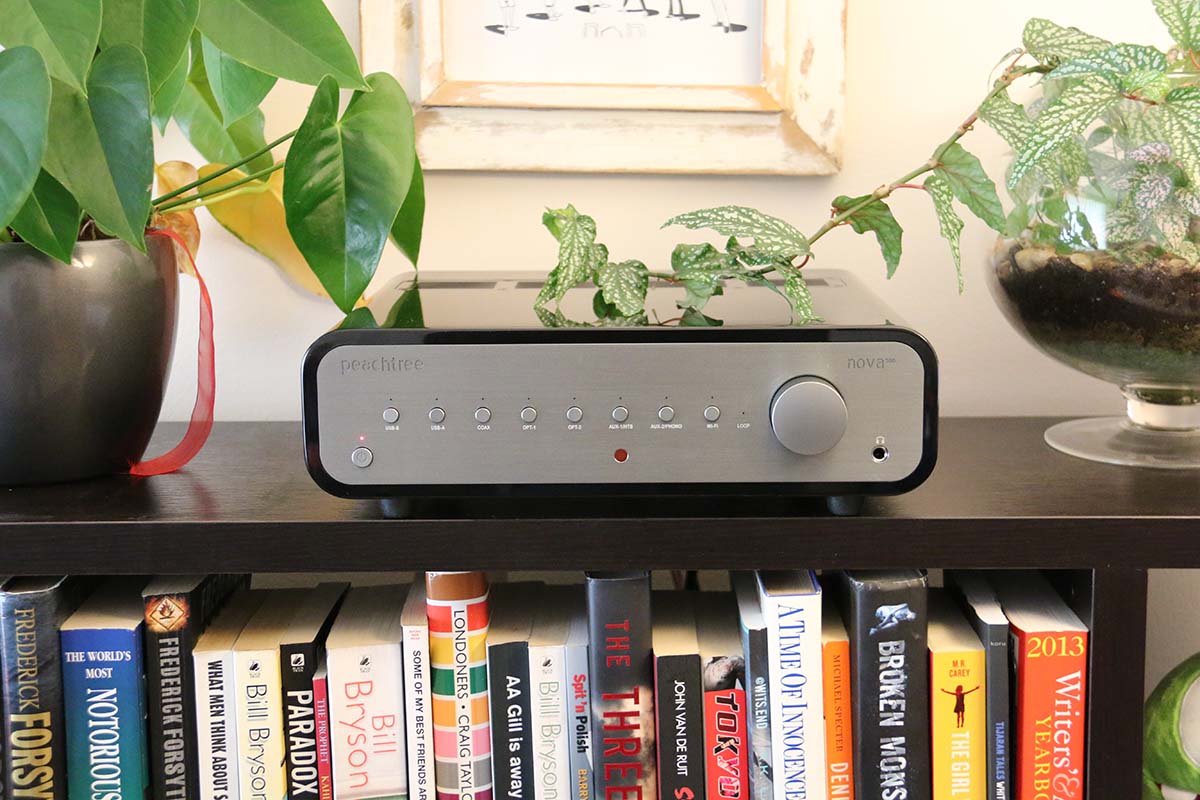
In more detail: the preamp not only handles the input selection for you, choosing which sound to take from what source, but also cleanly boosts the audio to a stage where the power amplifier can take over, using all its power to get the sound to acceptable levels. They almost always come as two separate pieces of equipment - two big black boxes. Or usually black, anyway. Amp designers aren’t all that imaginative when it comes to design.
Think of this like a good hotel. The preamp is the person behind the reception desk, checking you in. They find out who you are, where you come from, and which room you need to go to. If they are good at their job, they also make the experience a pleasure (in our metaphor, this is the preamp boosting the sound signal just a little). Then, the porter – a guy with muscles enough to handle your bags – takes you up to your room. That’s the power amp. The room, in this case, is your ears. Also, if you ever find a king-size bed and a hot tub in your ears, you should probably go to the doctor.
You’ll often see stereo amps referred to as integrated amps, usually by the kind of places that enjoy throwing jargon at unsuspecting listeners. An integrated amp is a box that contains a built-in preamp and power amp. It does all of the above, without needing two separate pieces of equipment. Most amplifiers you see on the market - both stereo and receiver - will be integrated. It means that you don’t need to worry about buying separate boxes to handle both the preamp and power amp duties. A perfect example is the Peachtree Audio nova300 (full review here) – don't be put off if you can't afford that one, as there are plenty of other good products for a fraction of the cost.
Once you know this, you can start to have some real fun. If you have the space and the budget, you can get some truly epic sound, and create a system that allows you to swap out individual components, giving you fine-grained control. Let’s say, for example, that you want to get the ultimate hi-fi system. You could go for a good stereo amp, or you could choose to buy an individual preamp and couple it with an individual power amp.
These type of set-ups are becoming increasingly rare, but one example is the Yamaha M-5000 poweramp with the Yamaha C-5000 preamp. Those are two fantastic (albeit very expensive) pieces of audio equipment that, together, make up your amplification system. So now, all you need is a source of music (like Spotify or Tidal), which you will then funnel to your preamp. The preamp is connected to the power amp, the power amp is connected to the speakers, and all you need to do is sit back and enjoy yourself.
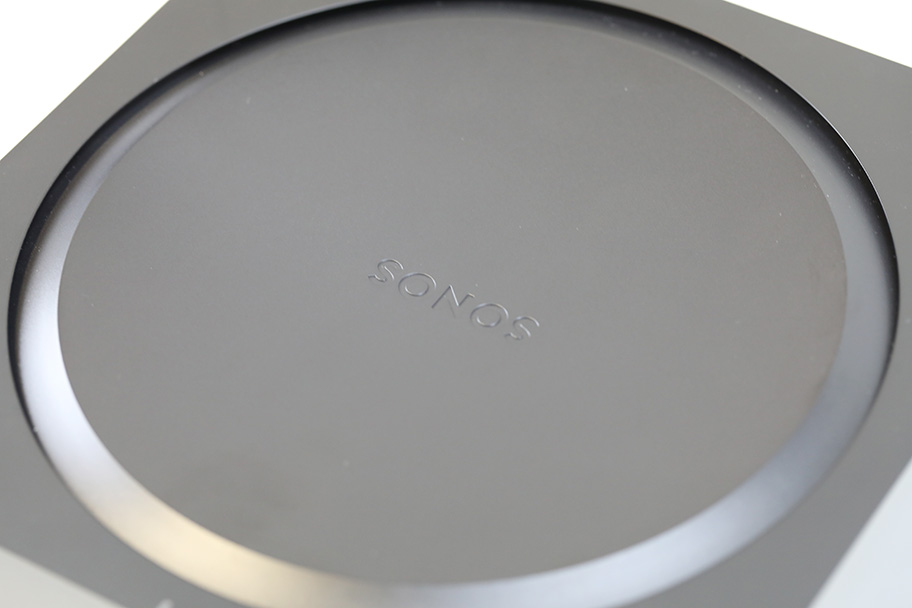
Now this is where it gets really interesting. Let’s say you’re dissatisfied with the sound of your receiver and want more control over your home theater audio. You’re going to need a big room and some serious cash. But when you have a big Hollywood action movie playing through some of the best audio equipment you’ve ever heard, it’s absolutely worth it.
First things first: ditch the receiver. You won’t be needing it. Instead, what you need is something called a surround sound processor. Essentially, this is a very complex preamp that can handle both audio and video data. It won’t do any serious amplification duties, but will act as air traffic control for where all the audio goes. Something like the Monoprice Monolith HTP-1 16 should do nicely. It costs nearly $4,000, but then again, we did say this route was kind of expensive…
Obviously, between the processor and your speakers, you’re going to need some kind of power amplification. You may want to invest in dedicated power amplifiers from the likes of Pass Labs and D’Agostino (you’ve already sold your kidneys, right?). If you’re really flush, you can actually use two power amplifiers per speaker, one for each left and right channel. These amplifiers are known as monoblock power amplifiers.
There may, however, be a more cunning solution. The big secret about stereo amps is that they can actually double as power amps. Something like the Sonos Amp (full review here) would be ideal for this. It’s not only eminently affordable, at around $700, but it’s also quite capable of fulfilling the power amp role. Furthermore, you’ll be able to stack multiple amps on top of each other, which makes for a much neater setup. The Sonos Amp is one of the secret weapons of many custom home theater installers. So, if you are thinking of going down the individual components route, you could definitely do worse.
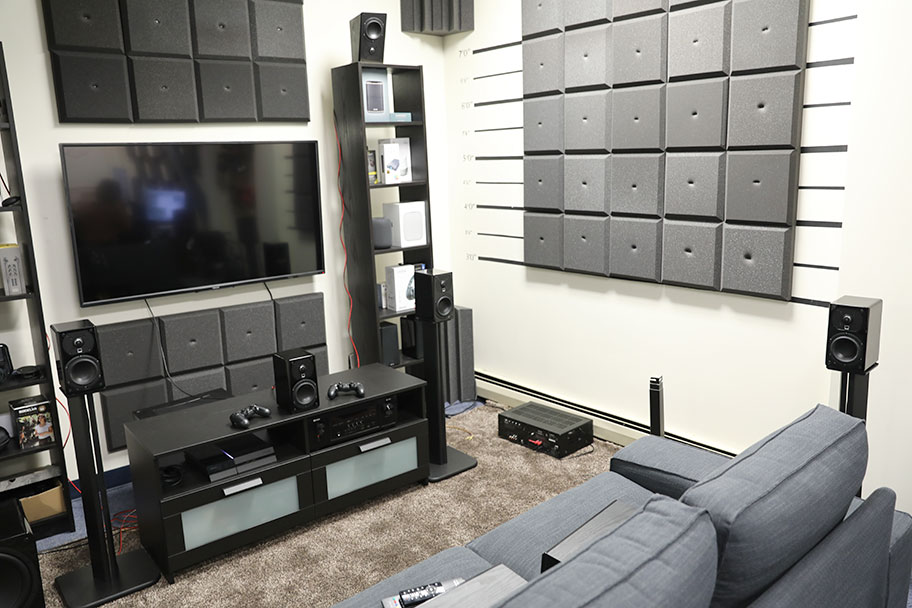
As you can imagine, there’s plenty more that goes into getting a great hi-fi system or home theater setup. We’ve put together several pieces dealing with aspects we think you should know about, and there are always more on the way.
You also may be curious about how to get a good match between your speakers and amp (or amps). After all, it’s not just about connecting them and hoping for the best. There are several things you can do to not only avoid blowing out your speakers, but also to maximize your sound quality. Here’s our full guide, which explains things like impedance and wattage, and does so in a way that’s easy to understand.
You may also run into problems when setting things up. This is hardly surprising, given the number of elements involved. Fortunately, most of the common problems have common solutions, and they’re all easy to implement. Check out our full guide to the most common home theater problems here.
See the Best Stereo Amps See the Best AV Receivers